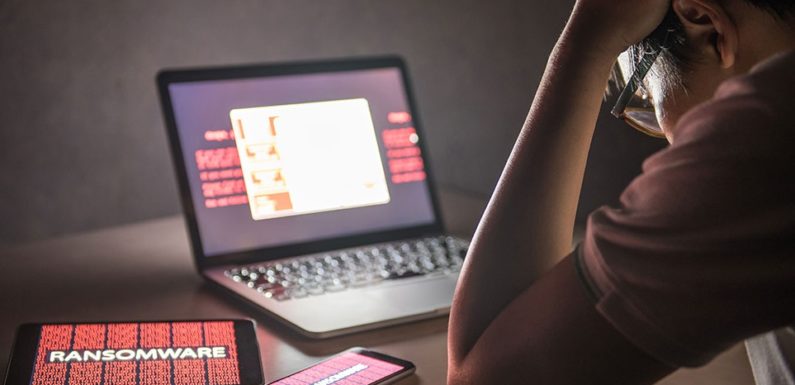
The complexity of ransomware may make you admire the attacks for a moment. The meticulous execution of the attacks is undoubtedly remarkable and you need to put in solid measures to ensure that you are not denied access to your organization’s data.
The challenge to select and adopt the best strategy to minimize the risk is rife among businesses. As such, your IT team should establish reliable techniques to safeguard the integrity of your data.
Why is Ransomware Such a Big Problem?
Well, this threat is significantly different from all the others including phishing scams or network penetration attacks. The latter threats pose a security challenge, they can easily be managed through simple firewall and barriers to unauthorized access. On the contrary, the ransomware attacks do not steal any data which means that their disclosure is optional and depends entirely on the specific organization under attack.
This fundamental distinction has serious ramifications on your internal controls as well as third-party oversight to ensure that organizations do not get trapped in the ransomware threat.
You need to understand that ransomware does not always trigger a duty to disclose due to the fact that the attack does not steal data like the traditional cybersecurity attacks. This phenomenon makes it relatively complicated for firms to handle these threats, since finding the solutions may be difficult for the IT experts in the given firms.
If there is a ransomware attack, it is possible that it can lock you and all your employees out from accessing the data but the data remains uncompromised. If you fulfill the attackers’ demanders, it is likely that they will unlock your systems which will grant access to your uncompromised data. While these attacks may be expensive and frustrating, your clients’ data will largely remain safe.
In such a situation, most organizations may yield to the pressure of protecting their integrity and meet the demands for the attackers. This is especially because of the guarantee that the customers’ information is safe and only a “simple” act of giving whichever amounts that the attacker needs is required to unlock the systems. On average, the ransomware attackers ask for little money that’s compelling enough to trigger your payment. In 2016, these attackers asked for an average $1,077 according to a report published by Symantec.
Most organizations prefer to pay the amount and keep quiet since any disclosure of the details can attract data protection compliance queries. For example, if the attacks occur, various regulatory bodies will be attracted to scrutinize the integrity of your security systems. The process of evaluating whether your processes and procedures are compliant with all security rules and regulations can be traumatizing and costly. Also, such attacks will shake up your client base since your organization’s ability to protect the confidentiality and privacy of data will be publicly questioned.
Not a single organization would openly trade the client’s trust and confidence for a few bucks! As such, most firms prefer to fork out the bitcoins to protect their image as they quietly clean up the mess in their security systems.
However, there exists a risk that large organization’s attempt to withhold the attack’s information can backfire on them. This is due to a large number of employees in these institutions which might leak the information out thus compounding the problem. This makes it necessary that you cautiously take decisions on such attacks to protect your integrity.
How to Protect Your Data from Ransomware: SOC 2 Audit
Measures to protect your system from abuse by attackers are simple and feasible. They include thorough scrutiny of the data service providers before you contract them. You should include a clause that requires them to explain the mechanism they have instituted to protect your data from ransomware attacks. Also, these providers should provide convincing ways that they use to tackle unprecedented attacks.
However, despite your inclusion of the clause, you may still face these two challenges:
- Your data service provider may provide false information on their security systems
- The providers may not be aware of their unsatisfactory security systems
If you’re worried about the possibility of getting misleading information from your data service providers, then you should use a SOC 2 audit tool. This is a special audit that will scrutinize all the security controls for your data service provider. The tool is highly reliable and you’re guaranteed to get the best reports that will enhance your decision-making and consequently improve your security systems.
While the use of SOC 2 audit tool is reliable, there exist a slight risk since you can set the SOC audits in any way that you wish. As such, you should ensure that you widen the scope to include the risks associated with ransomware thus guaranteeing reliable reports.
For example, the SOC 2 audits can be conducted using five main principles which include privacy, security, and availability. If you select a data service provider with weaknesses, you’re likely to encounter problems.
For example, in cases where the service provider gets a screen lock ransomware attack, your IT team will be barred from accessing the data thus making it an availability weakness. If you set your SOC 2 audit tool to only evaluate the security and privacy controls, then you’re likely to experience the availability attacks which would be costly. This highlights the importance of ensuring that you have a holistic approach when dealing with SOC 2 audits to ensure efficient protection of your data.
Large organizations that utilize the service of data providers should ask fundamental questions to determine their preparedness to prevent ransomware attacks.
Some of the issues that you should seek answers to include:
- What are the most essential assets that require solid security systems?
- To what degree is access a fundamental asset?
- How are we obliged to disclose if we don’t have access to customers or regulators?
- Has the organization met all the needs that are required to complete the security systems of the providers?
- Have we designed SOC 2 audits to match our security needs in the firm?
You need to ask your IT team to ensure that all these questions get adequate answers which will inform how the company will set up the SOC 2 audit tool. Also, accurate answers will guarantee the company that the data service providers are well-equipped to protect its data from ransomware attacks.
Your compliance officer should ensure that your organization customizes the SOC 2 audits to include all the data protection needs of the company. Also, the officer is obliged to research and identify various regulatory requirements to ensure that your organization does not get into compliance problems in the future. When you’re sure that you’ve done the right thing to protect the data, you can disclose the ransomware attack regardless of whether the data service providers support it or not.
Nevertheless, most companies will not disclose this information even when they are sure of data security compliance. The temptation to pay up the victims is substantially high and you may easily yield to it.
Is it possible for your data service provider to be entirely immune to ransomware attacks? No! However, the implementation of SOC 2 audit systems can significantly improve the security systems and prevent such attacks from occurring.



